BMW i4 eDrive35: Would you like a little less?
With a range of almost 600 kilometres and low energy consumption, BMW’s i4 eDrive40 is a good electric car. But does the concept of the electric 4 Series Gran Coupé still work if the size of the battery is reduced? And is it even worth it?
***
One thing right up front: a catchy model name is not one of the strengths of BMW’s current electric generation. BMW i4 eDrive35 Gran Coupé – that is the official name of the model BMW sent us to test drive. BMW is a given, and so is i4. “eDrive” stands for the electric rear-wheel drive (in contrast to the combustion engine rear-wheel drive “sDrive” and the all-wheel drive “xDrive”), the “35” is supposed to somehow link the model to BMW’s performance classification (the reference to displacement was scrapped a long time ago for combustion engines, too). Finally, the “Gran Coupé” describes the body style – something the carmaker apparently did not want to miss, even though the i4 is not currently available in any other body variant. Since that was complex enough, we will use ’35’ rather than the full model designation in this text.
The i4’s model policy is obviously strongly geared towards sales. At the premiere, BMW showed the model with the longest range, the i4 eDrive40, or 40 for short; A mid-range BMW with rear-wheel drive. And to satisfy the performance camp, a sporty top model i4 M50 with 400 kW all-wheel drive was also presented. At the car’s presentation in autumn 2021, the carmaker said it would spare no expense or effort to achieve a net energy content of more than 80 kilowatt-hours. After all, range is an important issue for customers. The result is 83.9 kWh gross, of which 80.7 kWh are usable. Mission accomplished.
But another clientele will want to be served sooner or later – those with a fixed upper budget limit, such as those entitled to a company car. We don’t necessarily want to talk about money-conscious customers because the price still starts at 56,500 euros. For this base price, the 35 comes with 70.2 kWh gross or 67 kWh.
210 instead of 250 kW – Sounds like more difference than it is
With a base price of 56,500 euros, BMW will sell only a few 35s below a gross list price of 60,000 euros. The value, which is important for company car taxation, will therefore hardly play a role in the decision to buy the new base model instead of the 40 with the longer range.
The electric drive, located under the boot floor, is the same design in both i4 variants (actually, in all three, as the rear-wheel drive model also uses this unit). For the fifth generation of electric drives, BMW relies on current-excited synchronous motors that do not require permanent magnets or rare earths. And as practical experience with various series shows, from the iX3 to the large iX and the new iX1, these drive systems are powerful and highly economical.
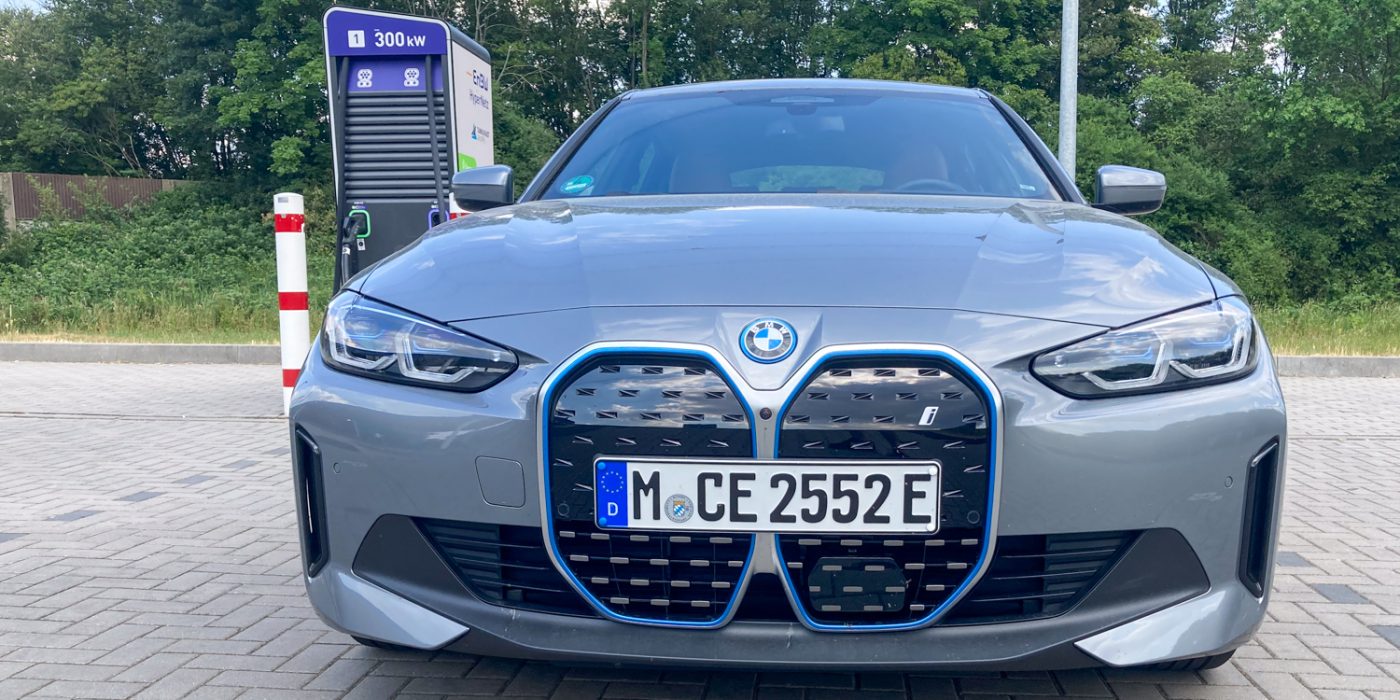
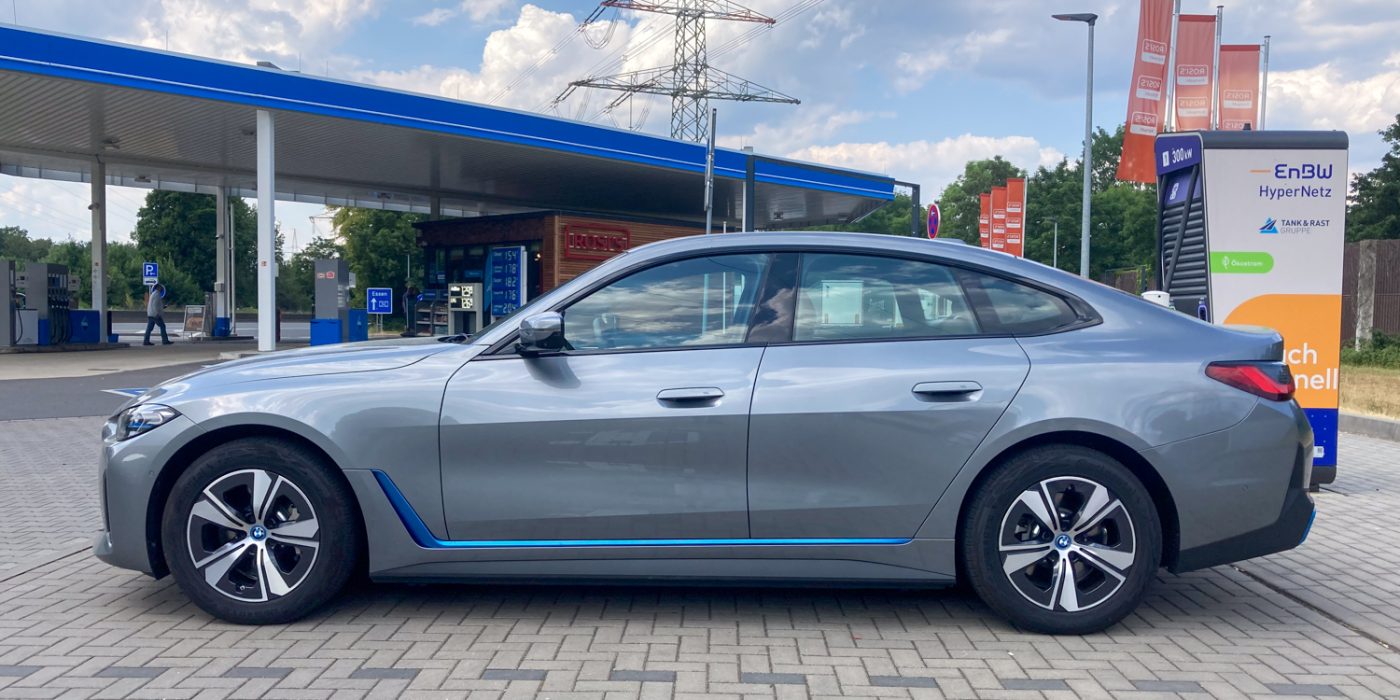
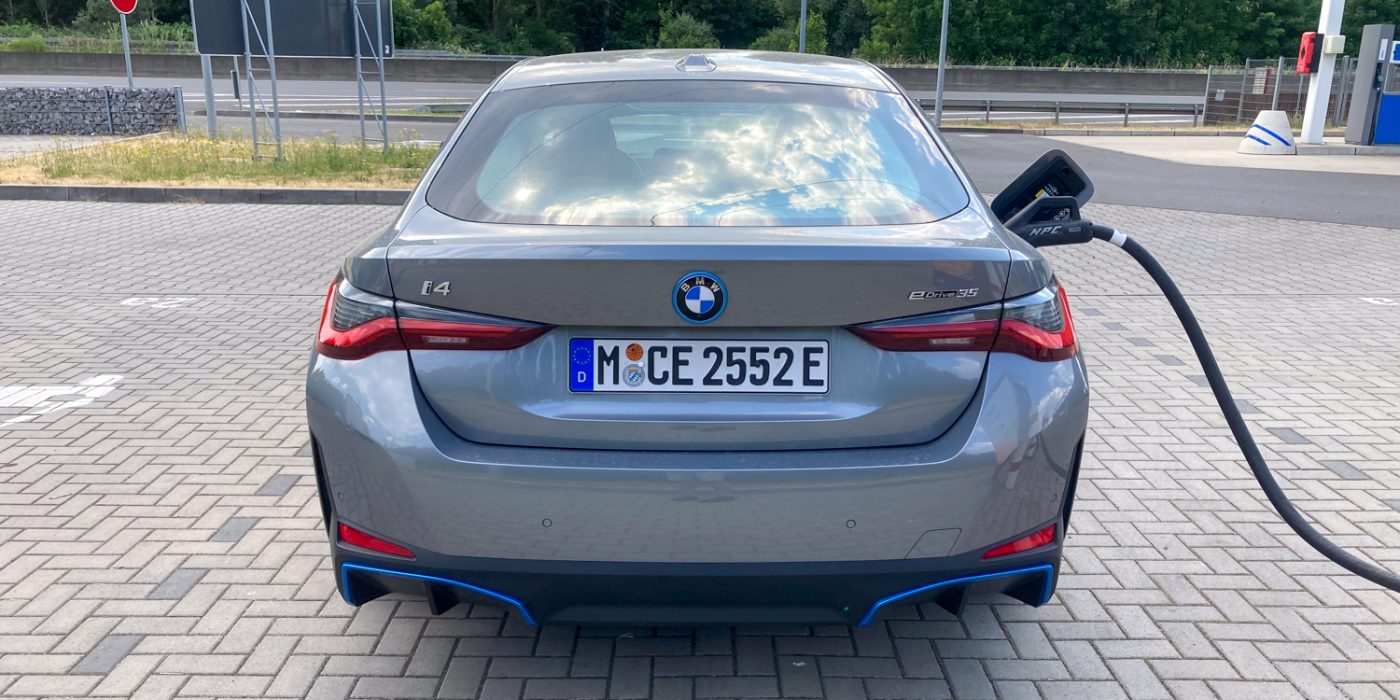
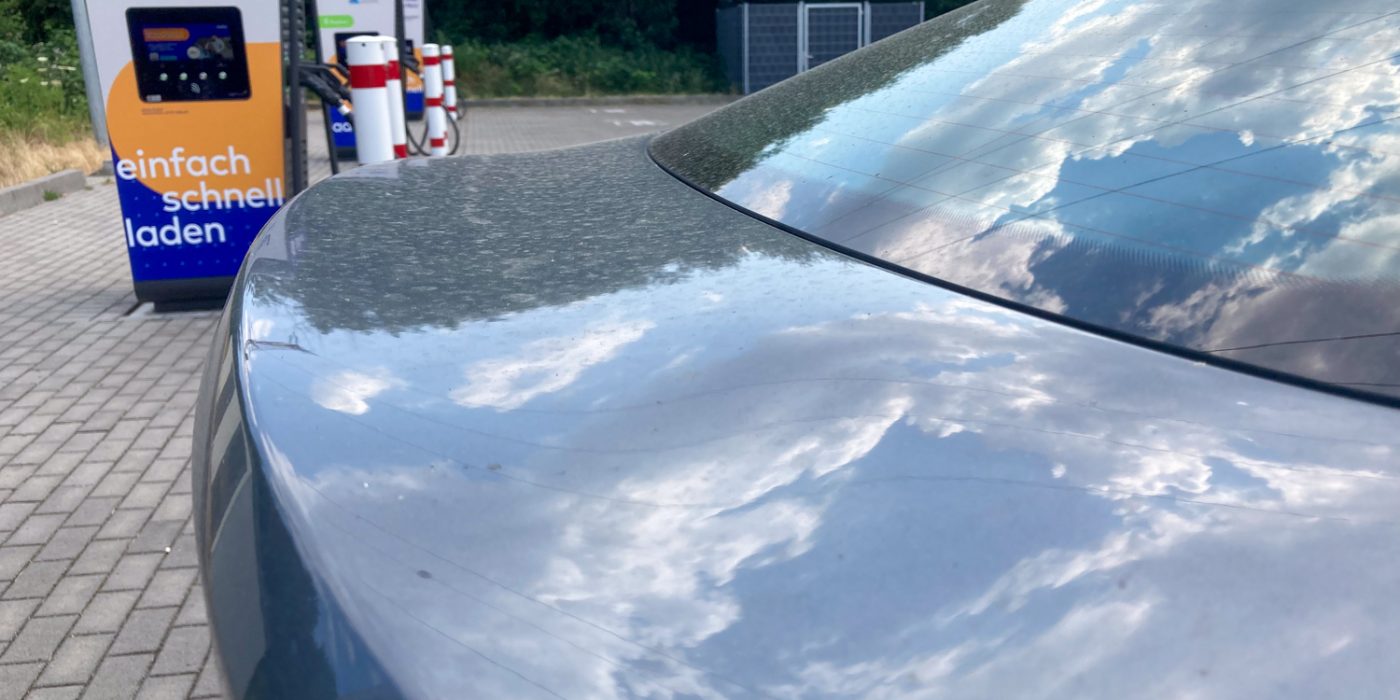
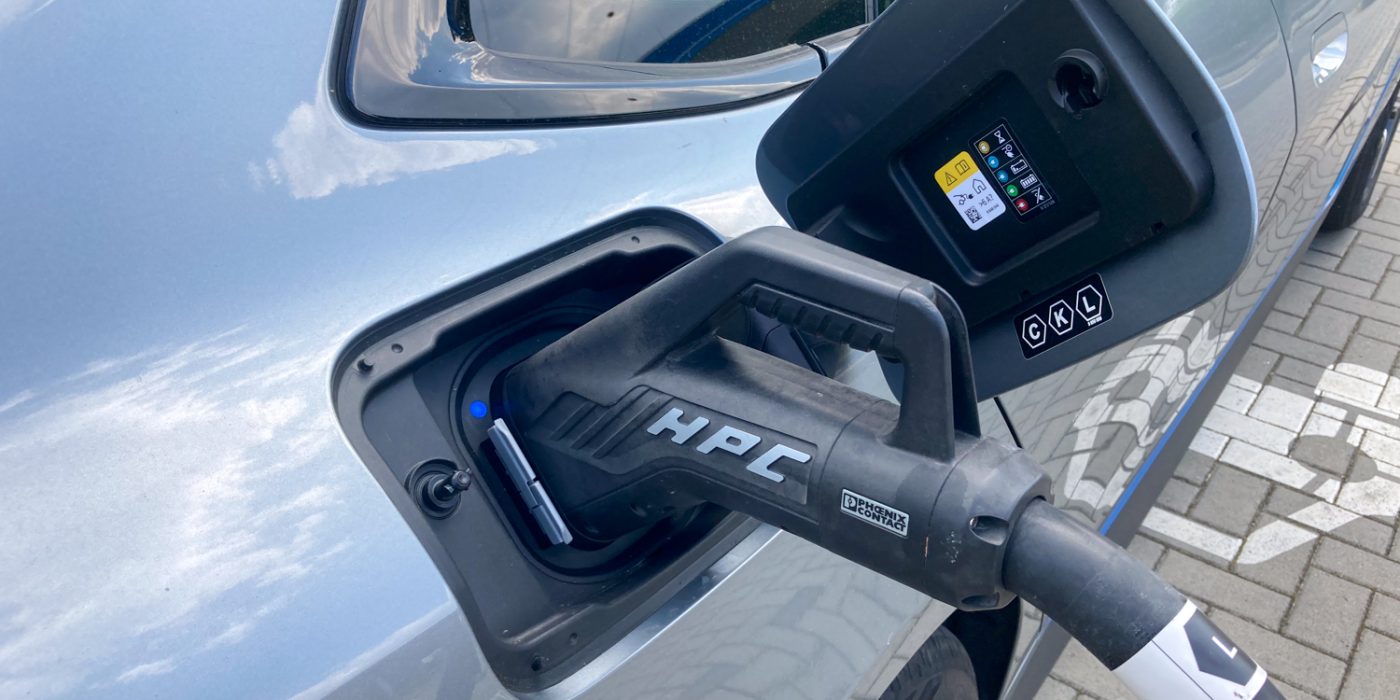
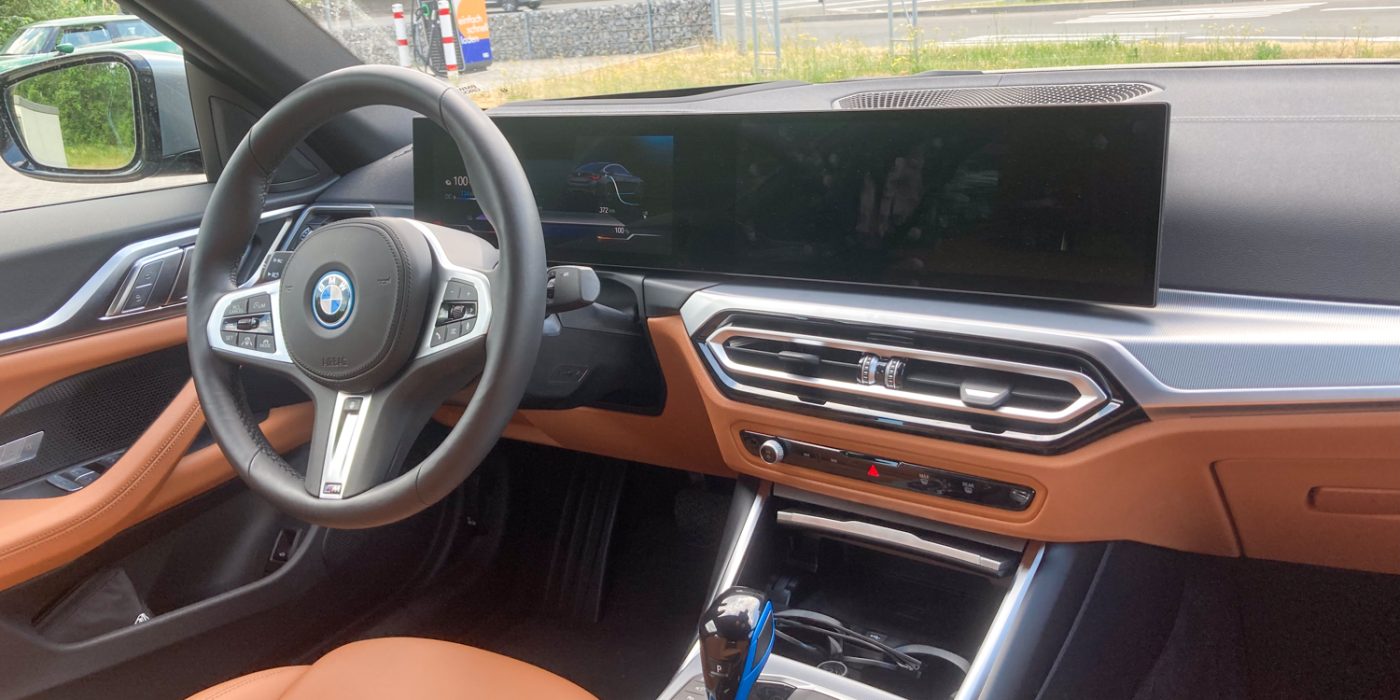
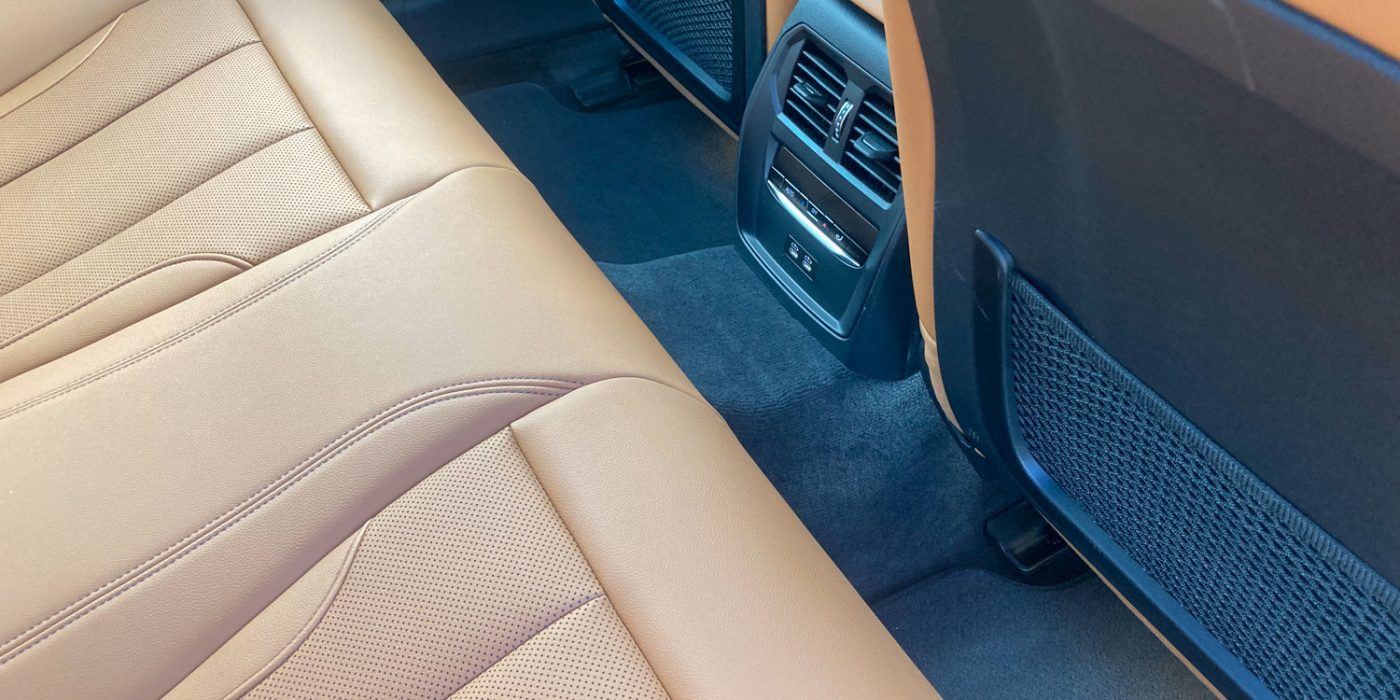
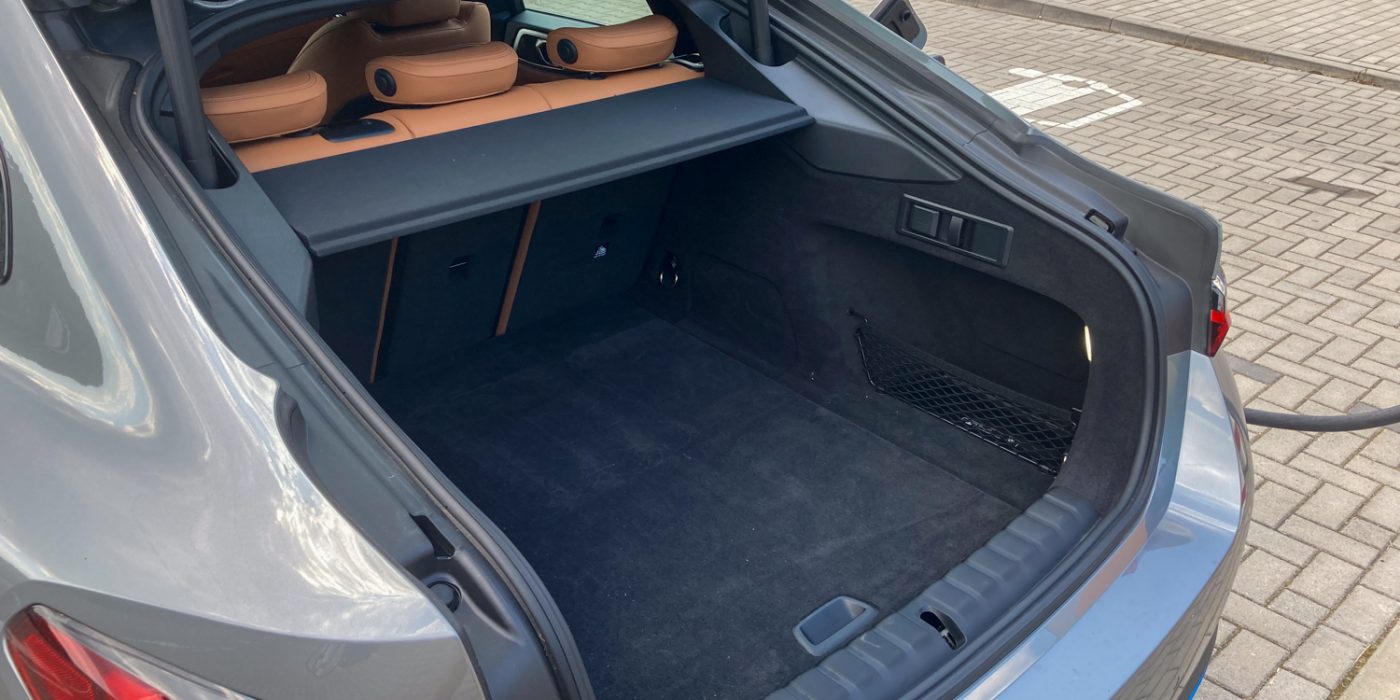

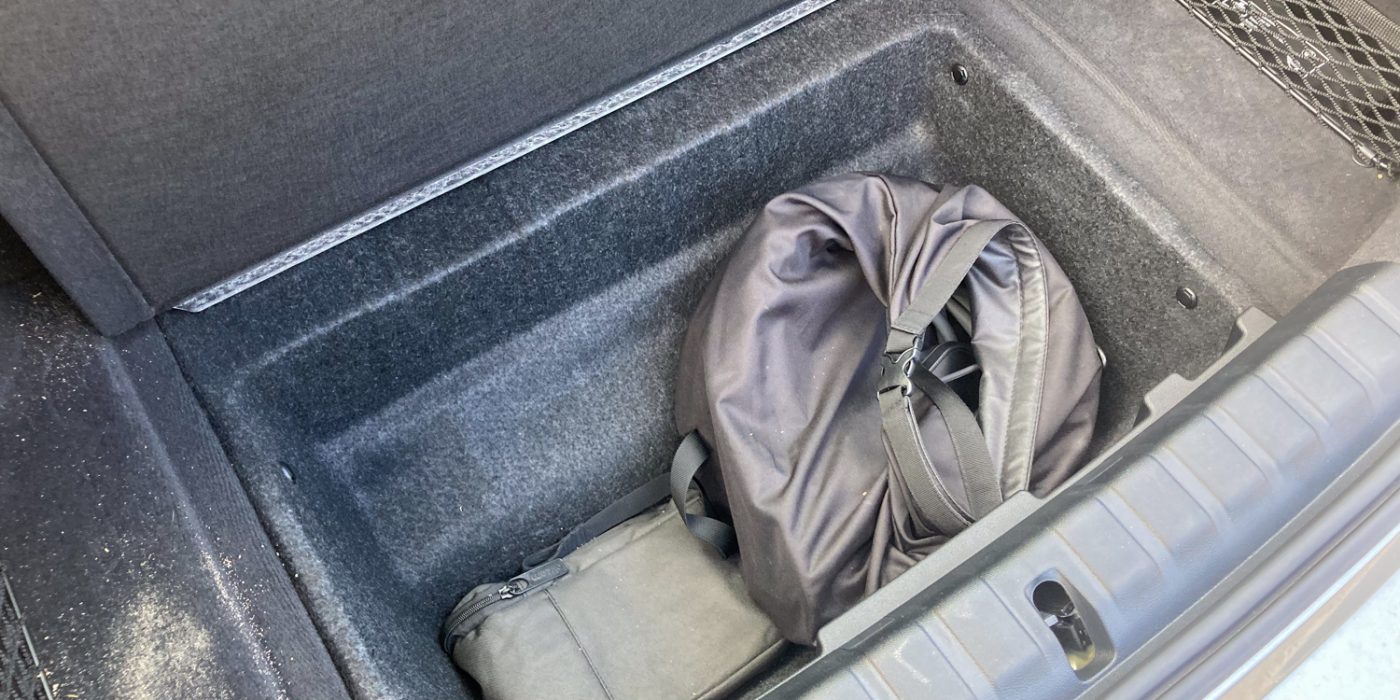
However, for the 35, the maximum power is “only” 210 kW, while the 40 has up to 250 kW. The difference lies not in the drive but in the battery. The 35’s battery has 353 volts, while the 40’s larger battery has 399 volts – so with the same amperage, the larger battery offers more power, regardless of whether the engine is capable of more. BMW uses the same cells in both batteries and installs fewer of them – often, the smaller batteries also use different cell chemistry.
After driving both cars, we can say with certainty that you won’t feel the difference in everyday driving, as we rarely need 200 kW or more. Even on the motorway, we didn’t miss the 40 kW difference, and definitely not in the city. Even with a little less power, the 35’s drive is well-tuned and responds finely to the pedal’s commands, whether accelerating or recuperating.
Consumption is almost identical
And the consumption is also almost the same: at the end of the test, the onboard computer showed 16.2 kWh/100km, but on individual journeys, it was also less than 15 kWh/100km. The consumption is slightly below the 40’s 16.8 kWh/100km, which is not necessarily due to the lower power or the smaller (and somewhat lighter) battery. We drove the car nearly a year ago. Tests took place under different conditions and with slightly different equipment (e.g. rims), so a direct comparison to the decimal place is not permissible. But the order of magnitude fits.
Of course, the range is different: almost 14 kWh difference in net energy content means a range of nearly 100 kilometres. So in that respect, the 35 falls short of its big brother. However, with our average consumption, the 35 still has a range of 413 kilometres.
On the motorway, with applicable speed limits, consumption rarely rose above 19 kWh/100km. That still means a motorway range of 352 kilometres. When we drove the 40 in 2022, we calculated a range of 436 kilometres, a difference of 84 kilometres. And even if we only consider the range of ten to 80 per cent State of Charge (SoC), which is relevant for long-distance driving, the 35 still has a real range of 250 kilometres on one charge. For the 40, it’s probably between 300 and 350 kilometres.
At the charging station, the differences are again smaller than on paper would suggest. With the smaller battery, the maximum DC charging power drops somewhat, from 205 to up to 180 kW. However, since it requires less energy, the 35 only needs one minute longer to charge from ten to 80 per cent than the 40.
Our charging curves show why that is. The charging curve for the 35 (in light blue) is very similar to the 40 (in dark blue) but always a few kW lower. It is thus not the case that only the peak is slightly lower due to the different battery voltage and that both battery variants subsequently charge on the same curve. Since the 35 never comes close to the power curve of the 40 and already drops below the 100 kW mark at 45 per cent SoC, it gets tricky from 60 per cent SoC.
However, the comparison in our chart to the two Tesla models also shows that some competitor models are at the same level – this is simply the performance level of the 400-volt models. However, in everyday use, a charging curve like the Mercedes EQE 350+ would be more desirable – a little less at peak, but the EQE still charges with 147 kW when the i4 has already dropped below the 100 mark. Between 40 and 80 per cent SoC, the difference is striking, even compared to the i4 eDrive40 – and its drive forms the basis for the i5, i.e. a direct competitor to the EQE. However, none of the German models come close to Hyundai’s 800-volt electric vehicles – the Ioniq 5 is shown in the diagram, but the charging curve corresponds to the Ioniq 6 sedan model.
Fast charging: The i4 eDrive40 takes the lead
Regarding fast charging, the i4 eDrive35 is somewhat behind – not only compared to the 40, but also to the competition. This is particularly noticeable when the charge level reaches 50 to 60 per cent, after which it takes significantly longer for the charge level indicator in the cockpit to move further to the right. If you regularly travel longer distances and want to complete them with as few charging stops as possible, go for the large battery. With the 35, many but shorter charging stops would be more appropriate to take advantage of the window with the higher charging power. A quick charging stop every 150 kilometres is probably different from what BMW’s premium customers expect – even in a basic model.
However, if the daily driving distance is less than 200 kilometres and you can charge your i4 at home or work with AC, the differences between the 35 and 40 are shockingly small. However, the price difference of 2,700 euros is also manageable. So unless there is a fixed budget limit and you would rather have another equipment package than a practical range of 84 kilometres, many customers will probably go for the iDrive40.
Apart from the slight price difference, there is another point of criticism where the 35 and 40 differ too little: the interior, specifically the footwell in front of the rear seat. Do you remember the statement that BMW spared no expense or effort to integrate an 80 kWh battery into the platform of the i4? The result was that, in addition to the battery modules arranged flat in the underbody, BMW added further modules on the “second floor”, namely under the rear seat bench and in the cardan tunnel of the combustion models. BMW removed precisely those three modules with twelve cells each from the cardan tunnel for the battery in the 35 Series. Only: the cardan tunnel is still there, even if it is now empty and without function. Yes, for purists, there is no BMW without a cardan tunnel anyway. However, pragmatists find it hard to understand why BMW did not give the i4 eDrive35 its own interior floor panelling. Presumably, removing the cardan tunnel construction from the platform is more challenging than expected. However, at this point, BMW cannot iron out the disadvantage of the combustion engine body: the space conditions.
The workmanship is of high quality throughout. The operating system is based on the classic car operating logic and is not just a tablet that happens to be installed in a car. The assist systems made a good impression, and the Car2X communication works. The BMW even pointed out traffic lights at a temporary construction site on a country road several hundred metres ahead of the vehicle. And the chassis is among the best in its class, and the noise comfort in the interior is also worth mentioning – no Tesla or Hyundai currently comes close.

BMW is also improving small software details. In our 2022 test of the i4 eDrive40, we criticised that the DC charging power was only shown in the instrument display in a barely legible bar graph. The graphic remains, but the display has been supplemented with an exact kilowatt indication. This at least gives the driver a better idea of whether a stop at the fast-charger is still worthwhile – with the bar graph, it was difficult to tell whether 100 or only 80 kW were still flowing, for example.
The combustion engine origin can be felt on the interior
But the i4 is also an internal combustion engine at its core. The front bonnet is long (for the straight-six), but even the rear-wheel-drive models do not have a frunk. The interior is not cramped, but tight – and not only with the cardan tunnel in the footwell. Easily accessible storage compartments are also relatively scarce. Although the boot is easily accessible thanks to the hatchback’s wide-opening tailgate, it is impossible, for example, to fit three crates of drinks next to each other in the boot. In the case of the Nio ET5, although it only has a smaller opening, it can stow three crates of mineral water side by side – and another six-pack next to it. In other words: a vehicle on a pure EV platform gets more out of this size class of roughly 4.80 metres and offers a more spacious feeling than the i4.
And (of course) the surcharge list is a recurring point of criticism for a German premium manufacturer. Our test car came with extras for more than 13,000 euros, which brings the gross list price from 56,500 to 70,880 euros. And we’re not talking about full equipment: the test car stood on 17-inch Aero rims for just 400 euros extra. Even the heated front seats cost 380 euros, and the inductive charging cradle for smartphones (in front of the cupholder and therefore difficult to access) costs an additional 200 euros. Ambient lighting costs 370 euros, and the “comfort access”, which allows the car key to remain in the pocket, costs 650 euros extra.
Conclusion
The “sacrifice” in the basic model of the i4 is unlikely to be of much consequence to many customers. However, since the price difference is slightly above the level of the assistance package, many customers will probably still go for the large battery.
At least BMW is stopping the trend towards ever larger batteries – albeit inevitably, because it cannot fit more of the current generation of cells into the underbody of the CLAR platform. Due to the efficient drive, achieving competitive ranges in this vehicle class is possible even with 67 kWh. Whether BMW can also make the customer understand in marketing that “more” is not necessarily better is another matter – starting with the price list.
Author: Sebastian Schaal; translated from German


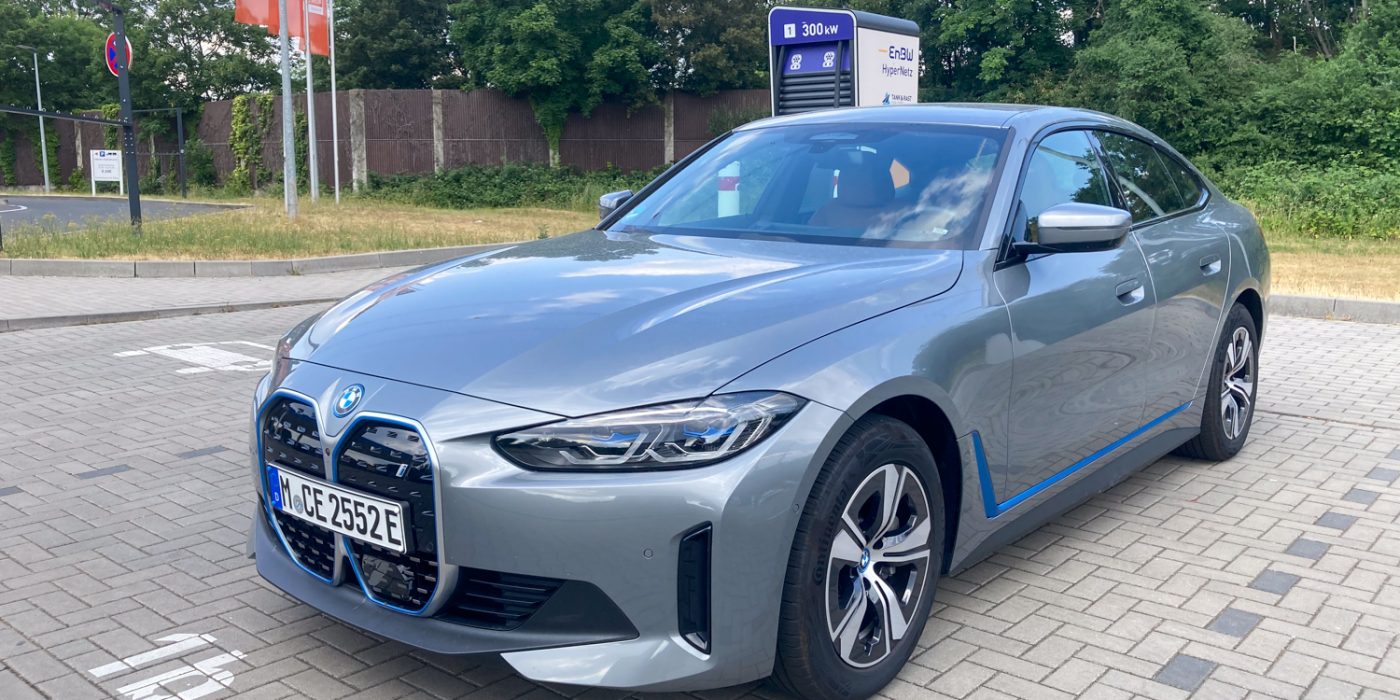
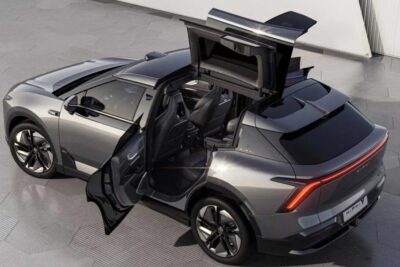


0 Comments